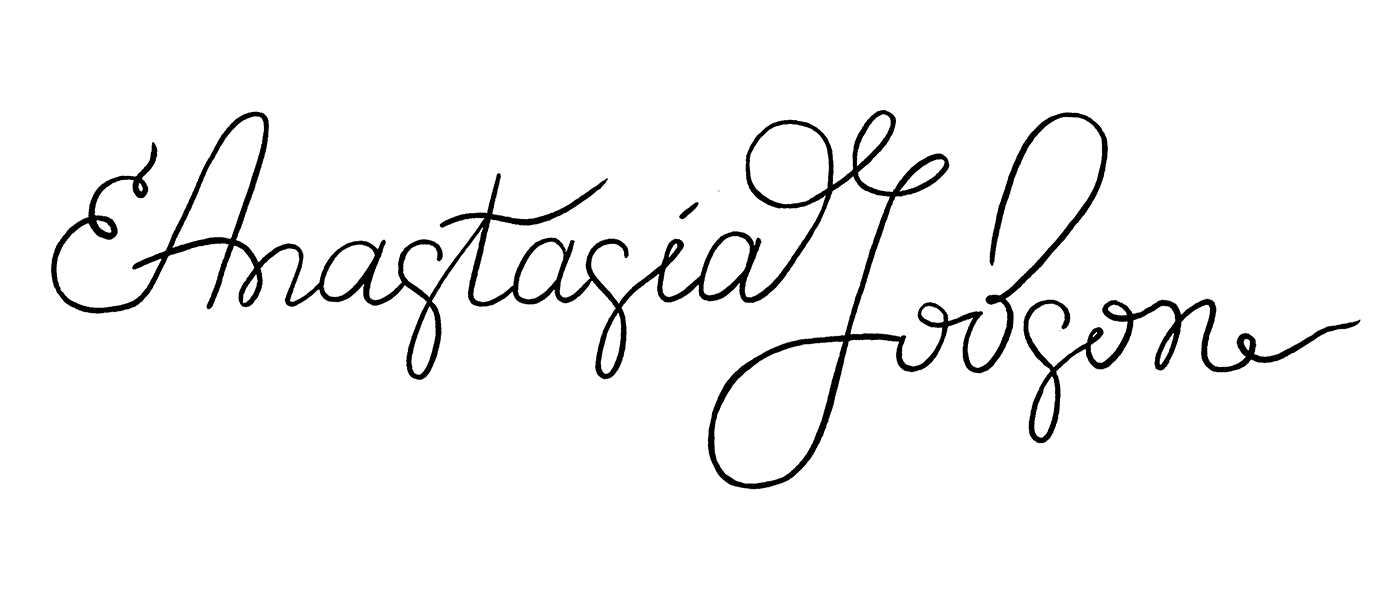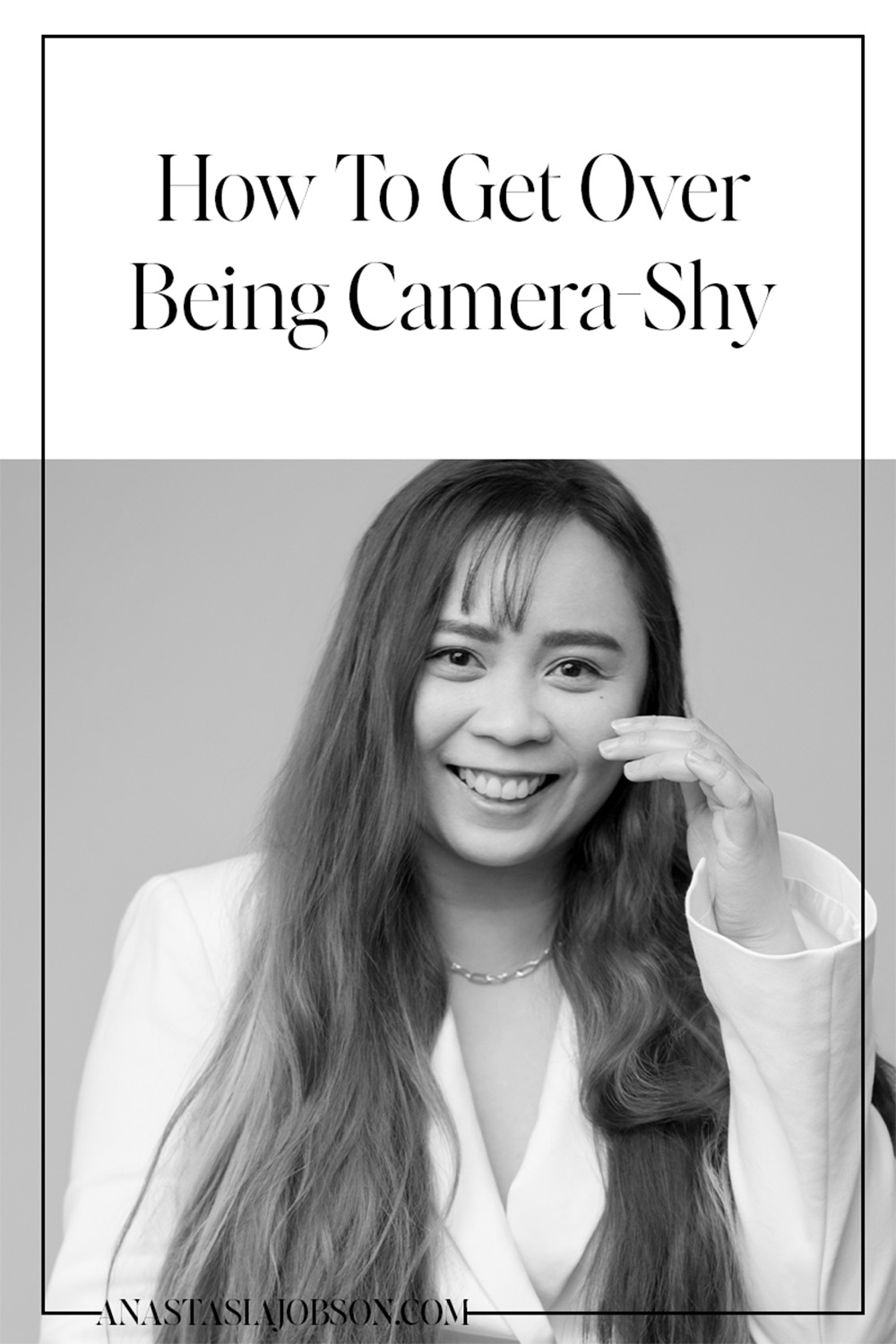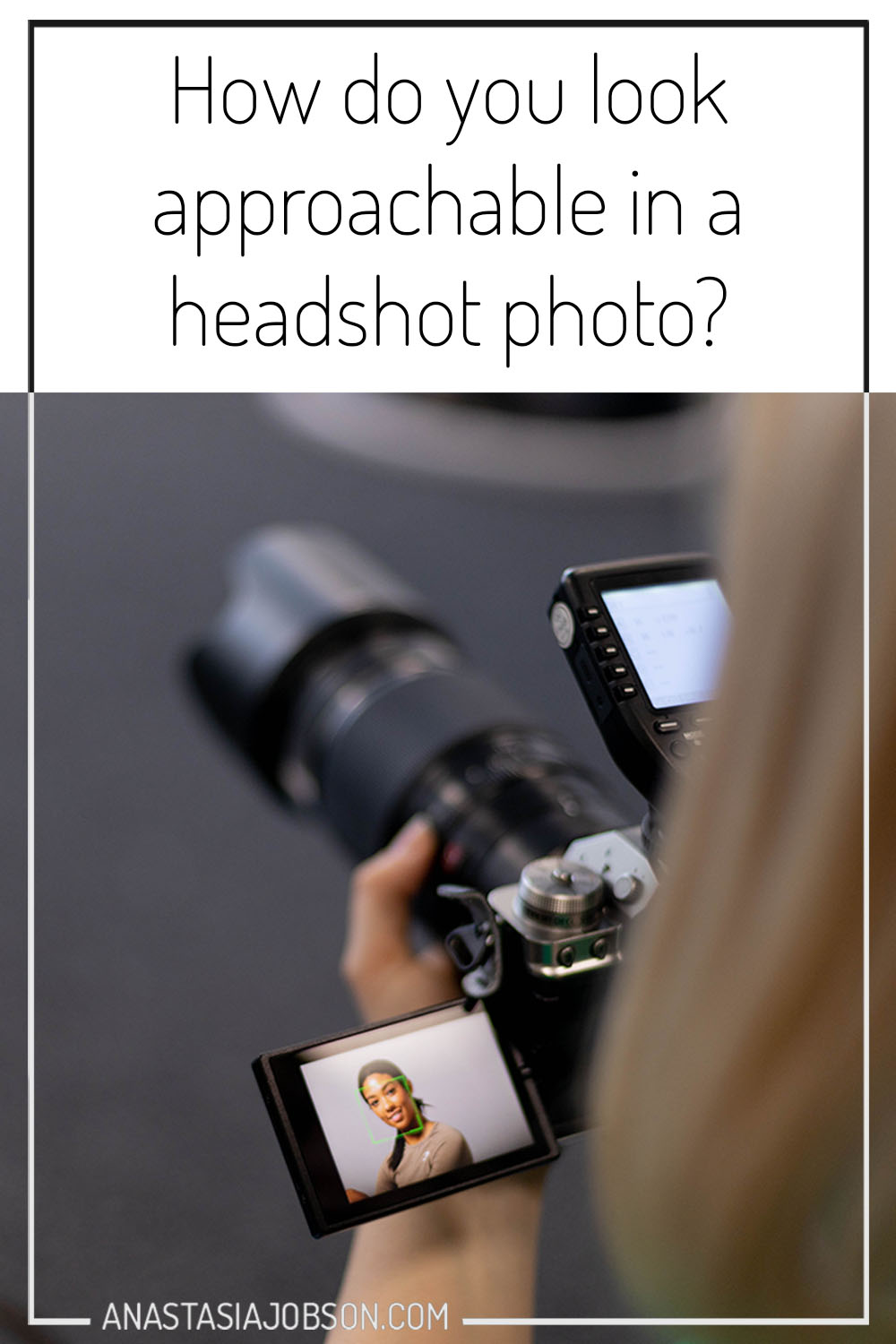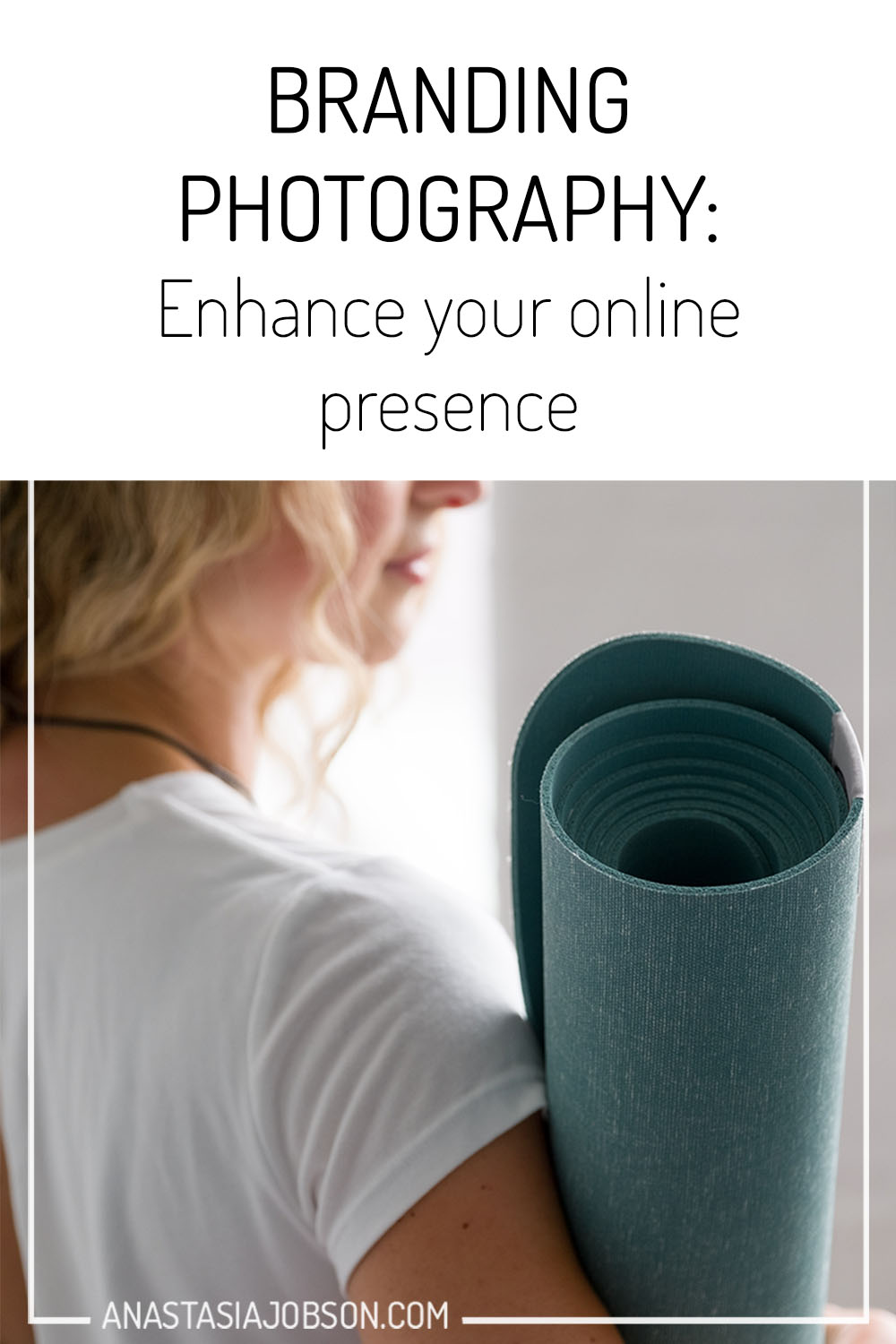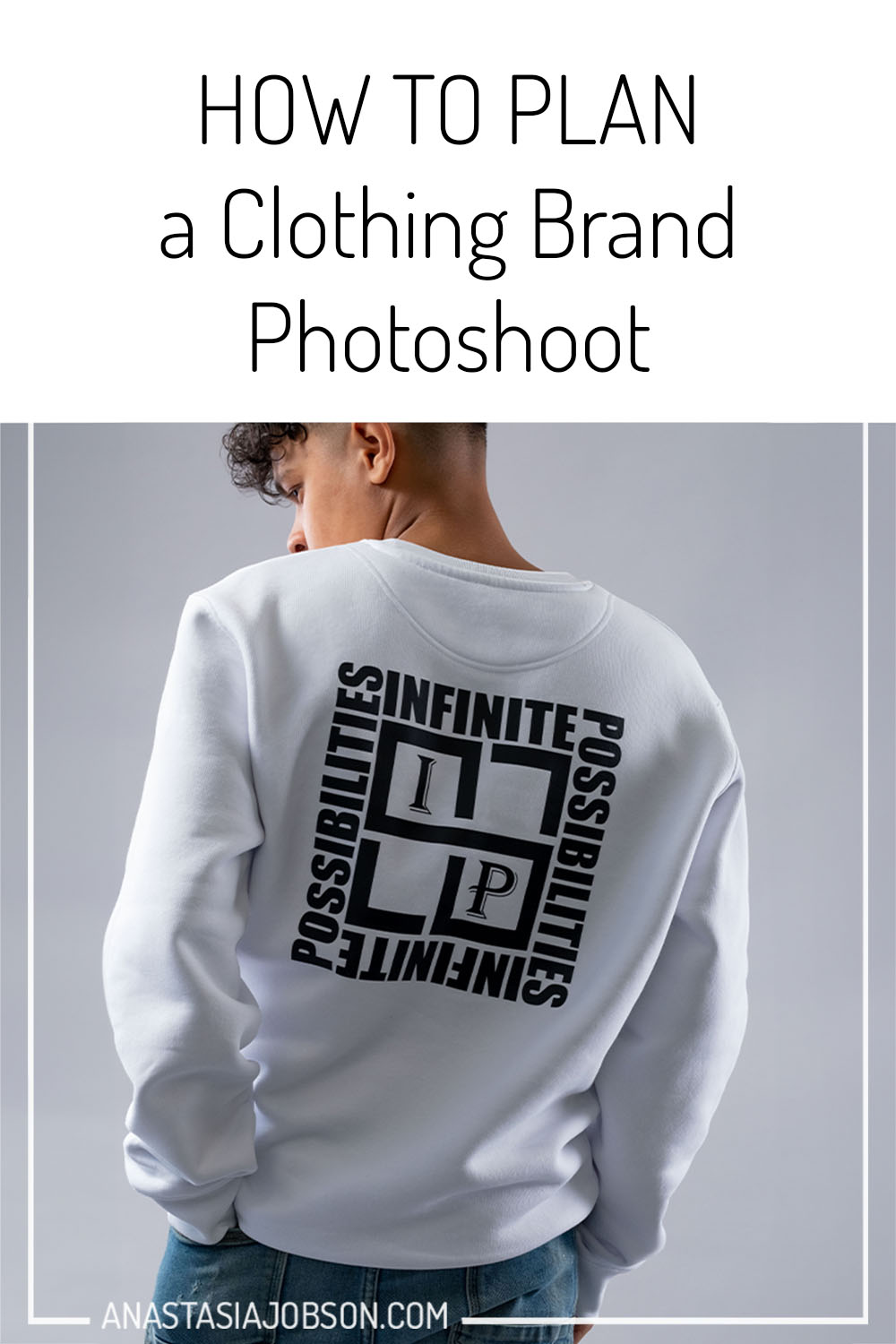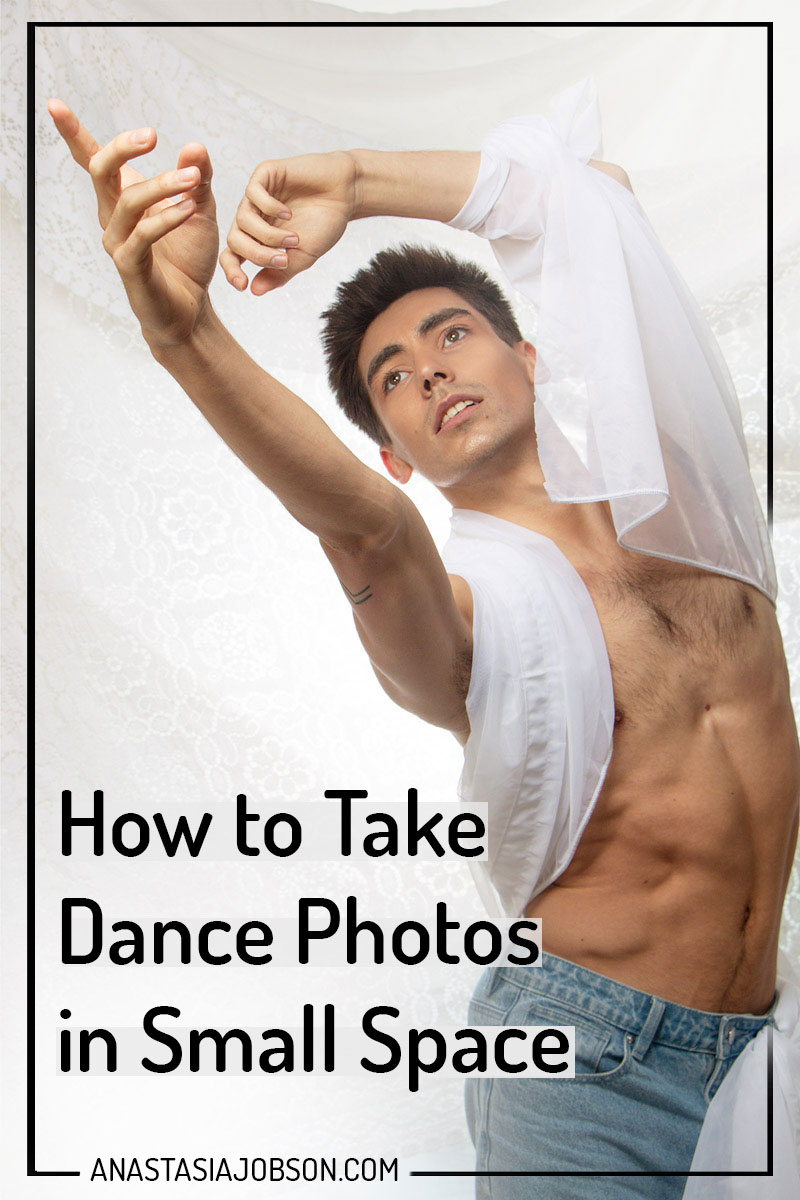
How to Take Dance Photos in Small Space
I love dance photography! The shapes, emotions, a story behind every movement… everything about it fascinates me! If you are an aspiring dance photographer or simply want to create more dynamic shots, and you don’t have a lot of space, don’t get discouraged and keep on reading! You can create stunning action/movement portraits in your tiny little photography studio at home, and today I want to teach you HOW to take dance photos in small space.
Most of my work I shoot at home, more specifically in the kitchen. How crazy is that? Equipment wise, my kit is quite basic: a 1.5 x 3m grey vinyl backdrop, a soft-box with a grid, a translucent umbrella, 2 speed lights, a reflector and of course a DSLR with a couple of lenses.
When you are shooting in a small space, very often there’s not enough room for a multiple light set up, which means you need to make smart and ‘compact’ decisions for every look you photograph. The images in this post for example were taken with 1 or maximum 2 light sources, that’s all!
If you want to learn more about dance photography, feel free to check out How to Photograph Dance blog post.
For today, here are my 4 TIPS for shooting dance photos in small space:
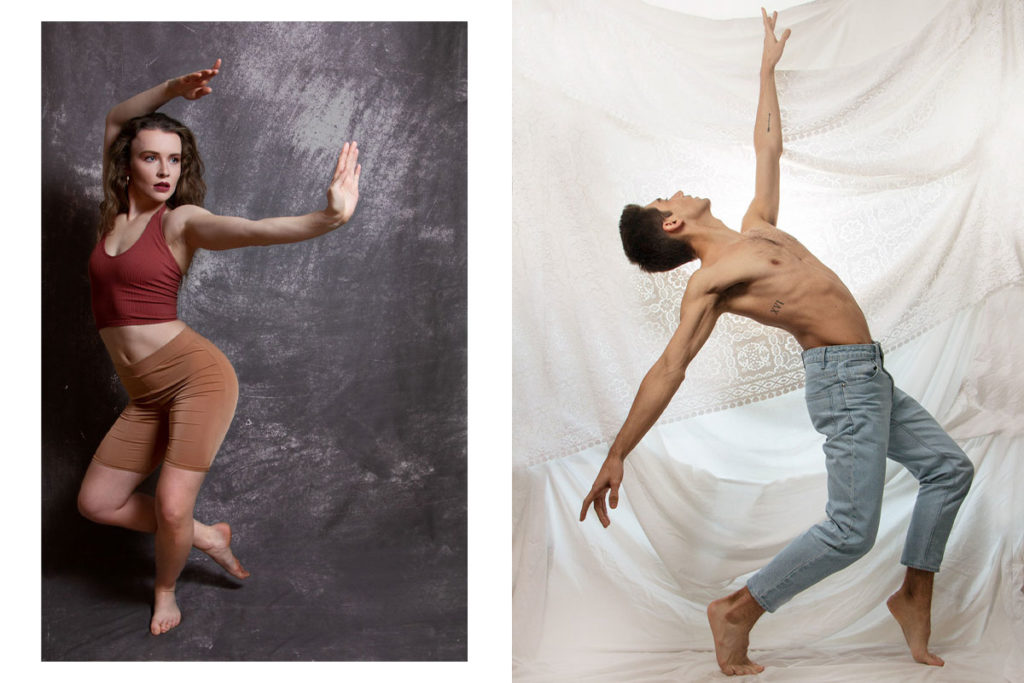
Right: Aitor Galende
STILL POSES
While big and energetic movement is a luxury in a small space you can always do stills… Still poses don’t necessarily mean standing still; think of a dance movement and freeze it. When you’ve got the pose, ask your dancer to hold it for a couple minutes so you can experiment with angles and figure out which one showcases the pose/dancer the best. Learn my 3 go-to techniques for posing dancers HERE.
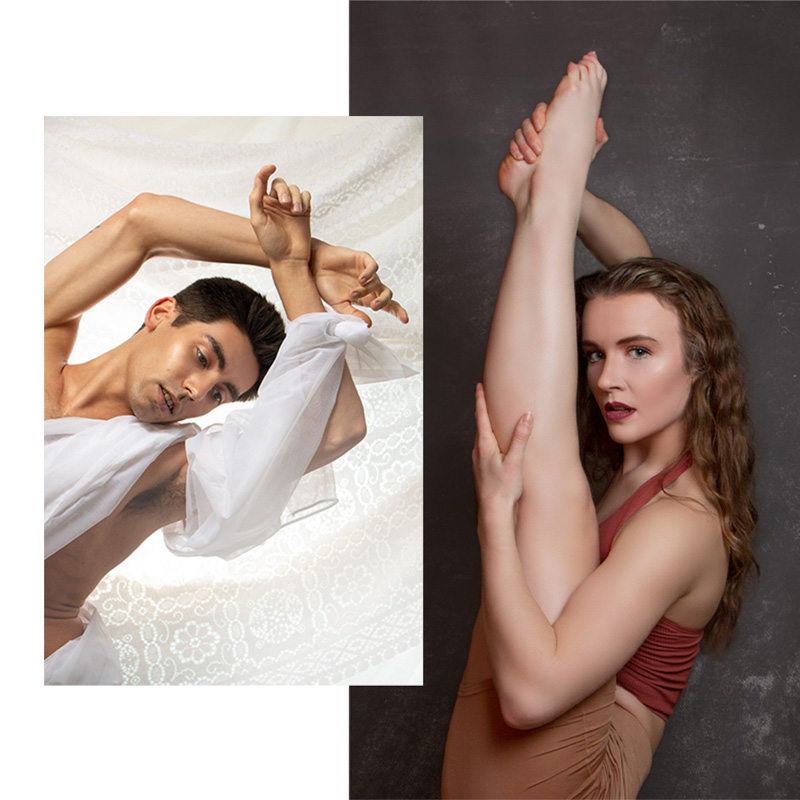
Right: Rebecca McCormack; MUA: Nova Stanley
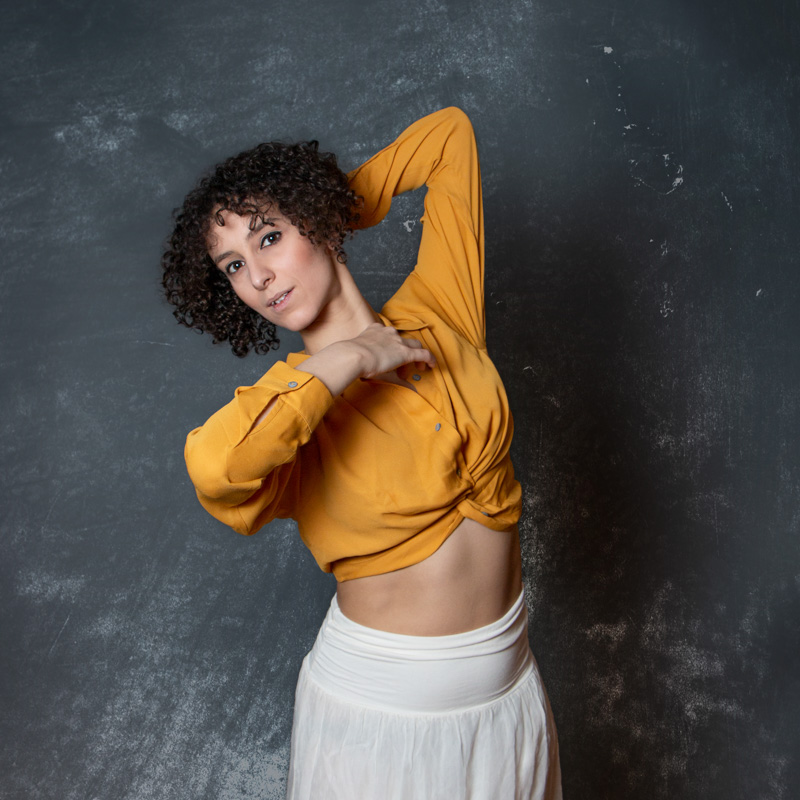
ZOOM IN and CROP
For a dance portrait to be compelling it doesn’t have to be always a full body shot. Zoom in and experiment with your framing. Get a face detail and capture emotion. Maybe focus on the arms and hands only for a couple of images. Try capturing feet, for example if it’s a ballet dancer you are shooting with. Very often the clothes the dancer is wearing take interesting shapes and have their own character.
Every single element of your dancer’s look tells a story. All you need to do is to look out for the details.
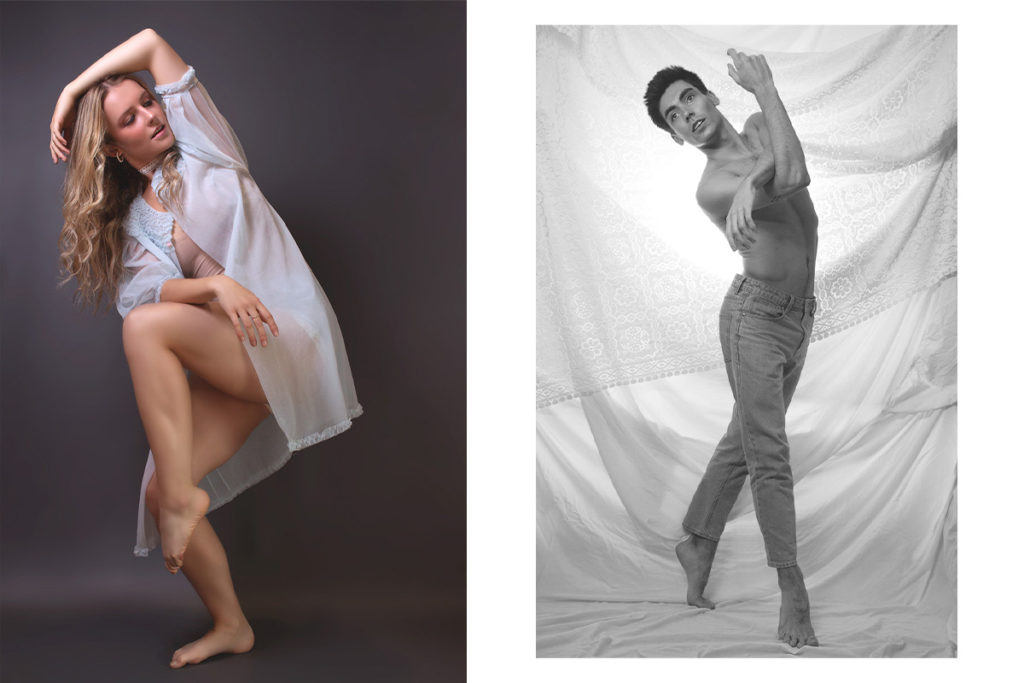
Right: Aitor Galende
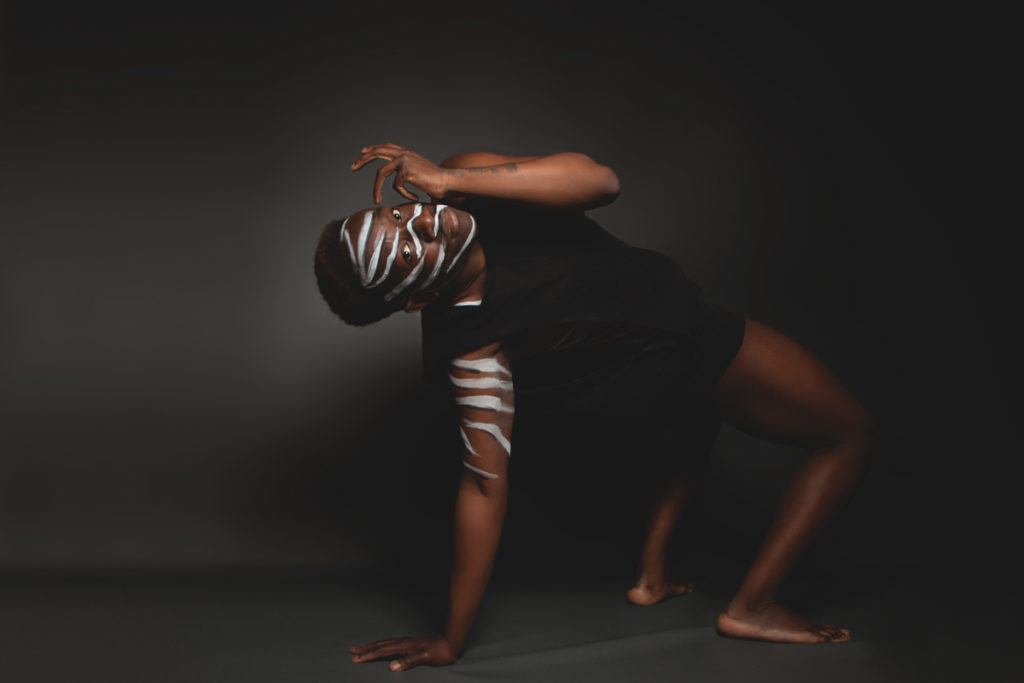
WIDE ANGLE LENSES
Use a wide angle lens if you want to capture the full body dance photo. In a small space you don’t normally have the freedom to step back and get a bigger picture of the scene if you’re using telephoto lenses. So, get your widest angle and get low. I personally often end up lying on the floor pushing against the opposite wall to get the widest angle possible.
PRO TIP: When taking a photo, try to get a clean shot of a dancer’s whole body in front of the backdrop, so that in post production you can simply extend the background to fill the edges of the photo. However, this method can get a bit daunting and time consuming in post production, so be prepared.
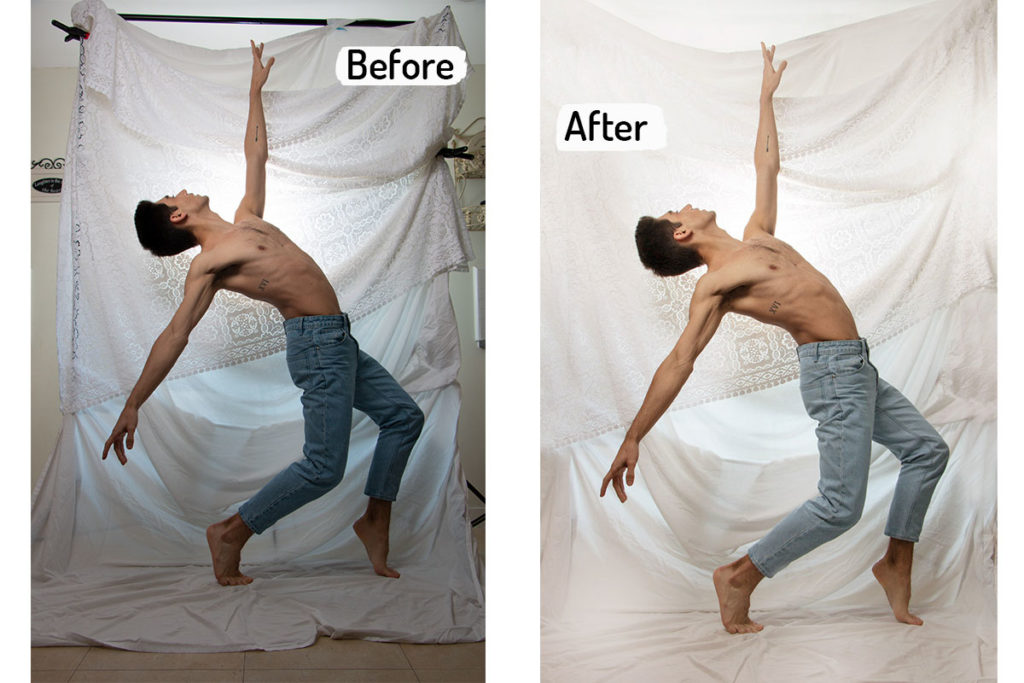
If there is enough time during the photoshoot, try to get the best possible image in the camera. Don’t leave it to the Photoshop to fix! Extra 10 minutes of editing here, 15 minutes of editing there… It adds up so quickly!
LIMITED LIGHT
Why don’t you make the whole room dark while only lighting up your subject? You can do it with either a soft-box with a grid, or have the light behind your subject to give him/her a silhouette look.
For a gridded look, place your subject further away from the background, have your soft box right above their head, so the light acts like a shower. The grid will give you a more directed light without spilling it around, and all the surroundings will look darker.
For a silhouette look, place the light source directly behind your subject or at 45 degrees at the back. Try experimenting with positioning the light. Move it slightly and see how the look changes.
My favourite silhouette look set up is 2 speed lights (no diffusors) placed behind the subject from both sides at 45 degrees looking at the subject. There’s lots of light spilling here, and depending on the angle you shoot, there might be some lens flair. Play around and see what works the best for you. Here are a couple examples:
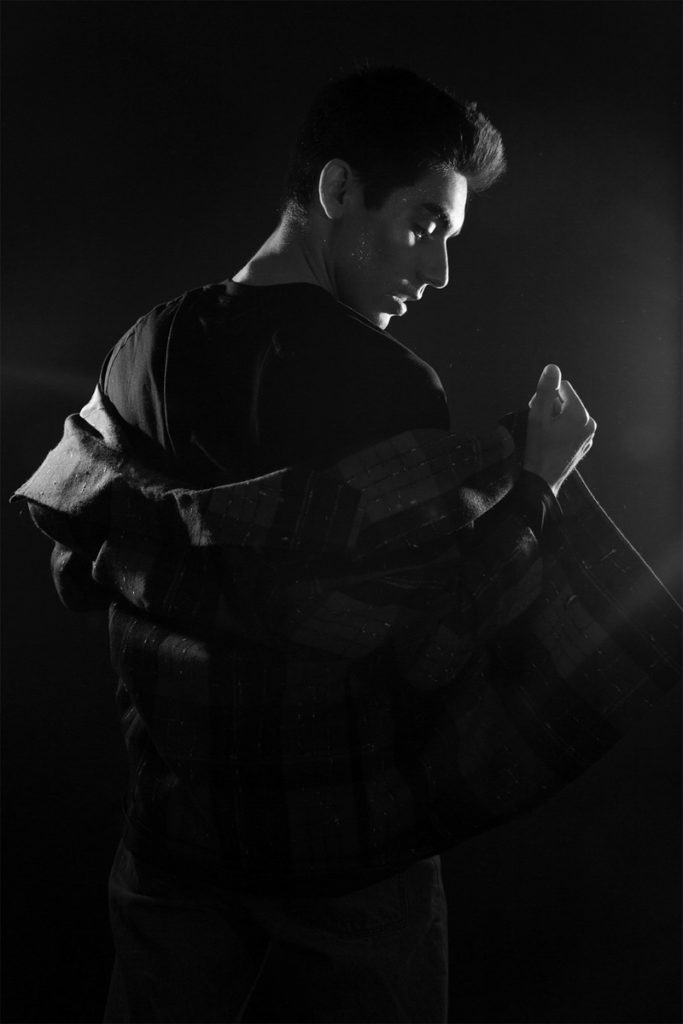
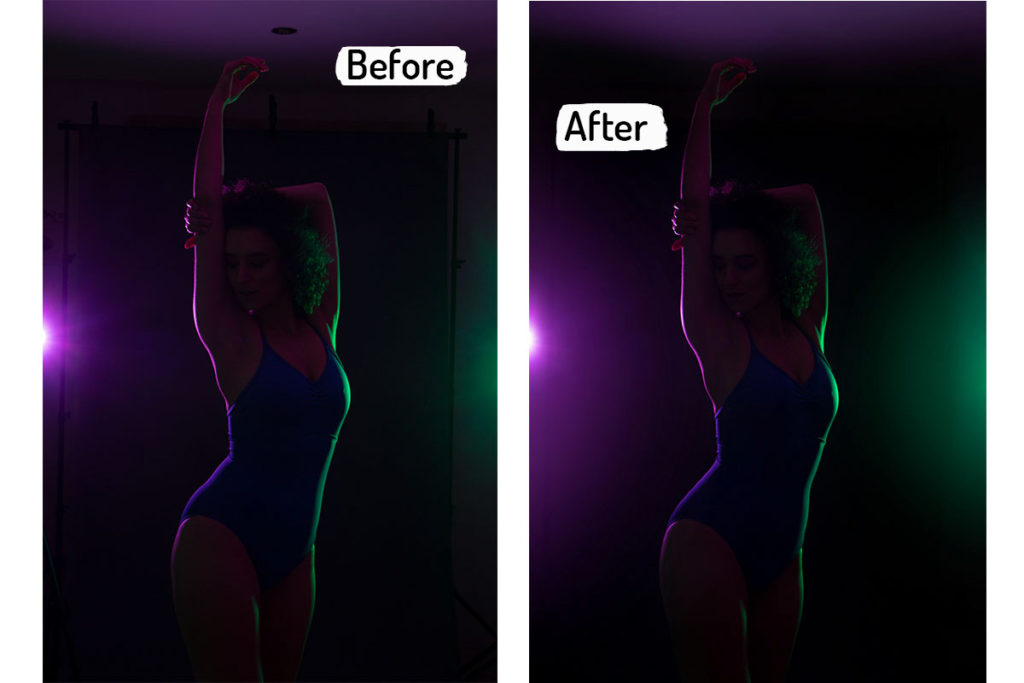
I hope you find this blog post helpful. Let me know about your experience taking dance photos in small space in the comment section below!
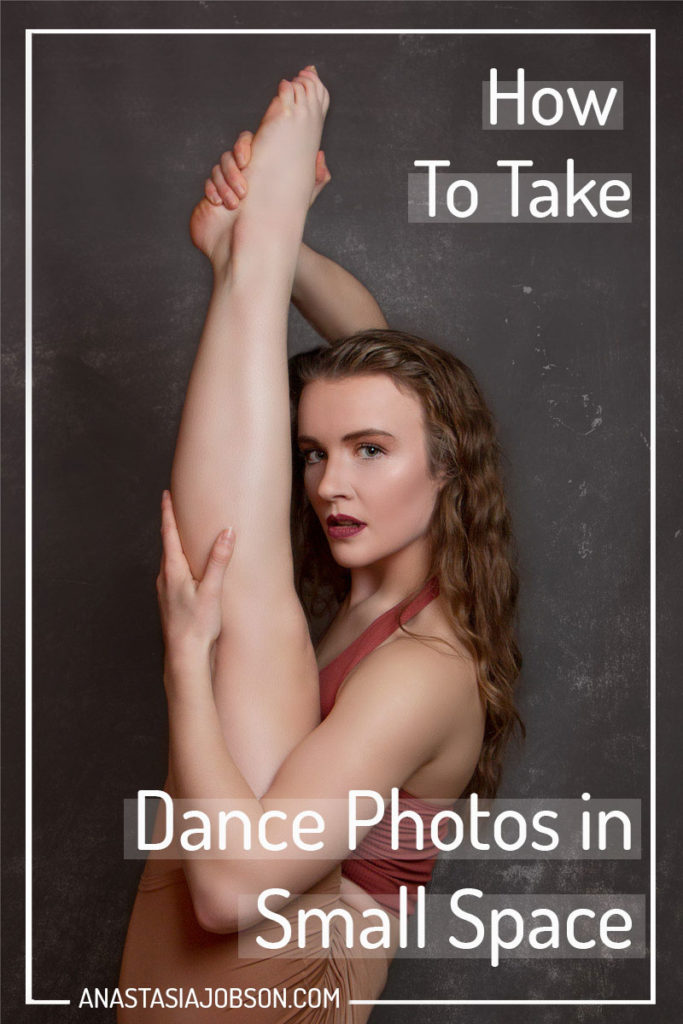
Sorry, the comment form is closed at this time.
